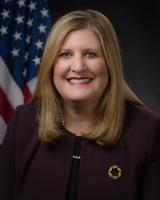2018 Environmental Merit Award Recipients
- Welcome
- Ira Leighton "In Service to States"
- Lifetime Achievement
- Individual
- Government
- Business
- Environmental, Community, Academia & Nonprofit
- Children's Environmental Health
- Special Thanks
Welcome to the Environmental Merit Awards Ceremony
Dear 2018 Environmental Merit Award Recipients,
Congratulations to all of you. We received nominations for these awards from across the region. Just to be nominated is an honor. To be selected is a feat because of a competitive selection process, strictly managed by an EPA team.
Today's award ceremony provides an important opportunity to celebrate all of you—our 2018 Environmental Merit Award winners. You make improving the region’s environment part of your daily mission. Through each of your accomplishments, we see that measurable and impactful environmental achievement is the result of dedication, partnership, and deep passion to make change. I'm very proud to help celebrate all of your successes.
Working in the region, I get the unique perspective of witnessing environmental results in communities across New England. Your accomplishments stand out across a variety of professional sectors. You make up a group of community leaders, scientists, government officials, business leaders, academics, and more. You come from every corner of New England, and your collective work represents significant environmental progress made across our states in the areas of water and air quality, innovation, waste reduction and reduced exposure to harmful substances.
On behalf of my colleagues at EPA New England and myself, I'd like to thank you—2018 Environmental Merit Award winners—for the work that you do. Please keep it up—as we know you will inspire others to follow in your footsteps.
Sincerely,
Alexandra Dapolito Dunn
Regional Administrator
EPA Region 1
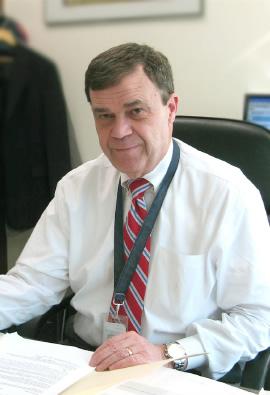
Ira Leighton "In Service to States" Annual Award
The New England Interstate Water Pollution Control Commission (NEIWPCC), the Northeast States for Coordinated Air Use Management (NESCAUM), the Northeast Waste Management Officials' Association (NEWMOA), in coordination with the New England state Environmental Commissioners and the United States Environmental Protection Agency, Region 1 (EPA) have initiated the Ira Leighton "In Service to States" Environmental Merit Award as a tribute to our long-time colleague and friend, Ira Leighton, who passed away in 2013, after serving forty-one years at the US EPA. Ira's dedication and passion for protecting the environment was evident to all who knew him. He was a constant presence in New England; a force who took ideas and made them actionable tasks that resulted in measurable improvements.
Saluting the Ira Leighton "In Service to States" Annual Award Recipient
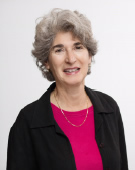
Nancy Seidman
Massachusetts
For more than three decades Nancy Seidman has been a respected leader on air issues at the state, regional and national levels. From her early years at the Northeast States for Coordinated Air Use Management, to her stint at EPA New England and long career at the Massachusetts Department of Environmental Protection, Nancy has played a central role in protecting the public and environment from air pollution. Nancy was a pioneer in linking energy and environmental policy. Her knowledge of the electricity system and its air quality impacts led to more effective approaches for reducing these impacts. Seidman was influential in putting together the Regional Greenhouse Gas Initiative, the world's first regional carbon trading market. Starting in 1995, she held a series of positions at DEP, ultimately becoming assistant commissioner of DEP's Bureau of Air and Waste. At EPA New England, she was director of the Office of Transportation, Air Pesticides and Toxics Management Division, where she worked with northeastern states on mobile source and transportation programs. At NESCAUM, Seidman helped bring California's clean car program to the northeast. She was instrumental in developing the nation's first regional clean gasoline program and helped ensure the interests of northeast states were reflected in the 1990 Clean Air Act Amendments. Nancy also is president of the National Association of Clean Air Agencies. Under her leadership, the Mobile Sources and Fuels Committee evolved into a strong advocate for national programs to reduce emissions from transportation fuels, cars and heavy-duty vehicles.
Since her retirement in 2016, Nancy has supported state energy and environmental policy efforts as senior advisor with the Regulatory Assistance Project. There, she engages with states and others on climate change, air quality policy and the benefits of energy efficiency. Nancy has been a leader capable of identifying and analyzing environmental challenges and opportunities, developing strategies to address those needs, and motivating collaborations in support of effective programs. Her infectious energy and dogged persistence were critical in bringing others together to support innovative and effective approaches to integrating the states' energy, air quality and climate change goals.
Lifetime Achievement
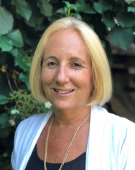
Anne R. Gobin
Connecticut
Anne Gobin retired in February 2018 from the Connecticut Department of Energy and Environmental Protection. Anne had joined the predecessor to DEEP, the Department of Environmental Protection, in 1988 as an environmental analyst in the Waste Management Program, and before that spent five years at the state Department of Health Services and the Vermont Department of Health working on safe drinking water. She joined the state's Air Quality program in 1993 as assistant director overseeing the Ai Bureau's Planning and Standards Division and later served as director of the Air Compliance and Field Operations Division for three years. She is best known for her accomplishments as chief of the Bureau of Air Management where, from 2003 to early 2018, she directed the implementation of numerous air quality programs while overseeing a staff of nearly 200.
Many of Connecticut's air quality programs benefitted from Anne's insights, which focused primarily on addressing Connecticut's ozone problem. Anne worked to reduce 'homegrown' air pollution. Thanks to her efforts, emissions of ozone precursors in Connecticut have declined by 53 percent since 1990. Anne also recognized that Connecticut needed to address interstate air pollution transport to meet health-based air quality standards. She worked to reduce air pollution on high electric demand days and petitioned EPA many times to push upwind states and upwind sources to do the right thing. During the last few years of her career, Anne focused on electric transportation. For example, she spearheaded adoption of Connecticut's landmark zero emission vehicle rebate program, developed with Connecticut's automotive retailer's association.
Anne also held leadership positions in regional and national organizations, including the National Association of Clean Air Agencies, Ozone Transport Commission and Northeast States for Coordinated Air Use Management. The people of Connecticut are lucky to have had Anne working for them, making the air easier to breathe.
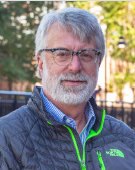
Robert L. Zimmerman, Jr.
Massachusetts
Bob Zimmerman retired this summer as executive director of the Charles River Watershed Association having worked wonders for the Charles River. During a 27-year career, Bob's ingenuity and vision took one of the state's dirtiest rivers and made it into one of the cleanest urban rivers in the United States. In this job, Bob raised awareness of issues on the Charles, growing the organization ten-fold. He sought non-traditional solutions to age-old environmental problems. He was a strong advocate to put into place the Massachusetts Water Resources Authority's long-term plan for controlling combined sewer overflows, the backbone of the Charles River and Boston Harbor cleanup, which will dramatically reduce the flow of sewage into the Charles. He established a monitoring and field science program that provided data needed to understand the dynamics of the Charles. Bob also invented SmartStorm, a rainwater harvesting system, while creating a stronger regulatory climate for rainwater recycling.
The list of Bob's successes goes on, including everything from starting a fish restocking program, supporting litigation to protect water resources and developing the underlying science for a phosphorus load limit, to developing software that reduces costs on stormwater management. His advocacy led to the creation of new parklands. The long-term impact of Bob's work has been to play a pivotal role in taking what was once an open sewer and turning it into the Central Park of Boston, an urban mecca that supports fishing, swimming, sailing, rowing, water-gazing, walking, running, bicycling and other recreation by some 30,000 people each day in summer. The results can be measured in the 99.5 percent reduction in sewage discharged to the Charles from CSOs and in the fact that the river meets swimming standards about 70 percent of the time, compared to less than 20 percent early in Bob's career. Boating is now safe nearly all the time. Bob has been an inspirational leader in the watershed world.
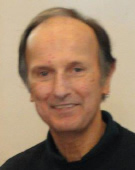
William S. Napolitano
Massachusetts
Over the past three decades, the ecology of Southeastern Massachusetts, the Taunton River Watershed and the Taunton River itself has had no greater champion than William Napolitano. Bill's contributions to the ecological health of the region came through his role as senior environmental planner with the Southeastern Regional Planning and Economic Development District, the Taunton-based regional planning agency. In this capacity, Bill was one of the co-founders of the Taunton River Watershed Alliance in 1988, the first organization dedicated to serving the interests of the entire Taunton watershed. He served on its board of directors, and continues to support the organization to this day. Bill was instrumental in the Taunton River getting federal designation as a National Wild and Scenic River, an accomplishment that took nine years of patient advocacy and quiet determination. The river's designation by Congress in 2009 was testimony to Bill's belief in the river's ecological significance, historical and cultural values, and its dignity as a regional treasure that had historically been overexploited and underappreciated. Bill championed the river fervently when few were willing to embrace that role, and made dozens of presentations to selectboards, planning boards, and community groups. The value of this critical outreach was perhaps most clearly seen in votes supporting the designation in all 10 communities along the river.
Bill continues to work on behalf of the river as administrative support for the Taunton River Stewardship Council, which was established to put in place the stewardship plan created when the river received its designation. Bill guides the council's meetings, prepares agendas, and provides critical support to council members, particularly citizen volunteers. Bill's wise counsel ensures that these citizen volunteers are energized to serve in their roles, and have the resources necessary to fulfill their functions as council members.
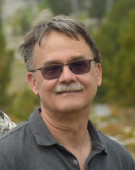
Gary S. Lynn
New Hampshire
Educated in chemistry and chemical engineering, Gary began his career in environmental consulting, where he honed his skills in solving environmental challenges. In the early 1990s, Gary began his 25-year career at the New Hampshire Department of Environmental Services, working first in Superfund, guiding cleanup of the former Pease Air Force Base. In 1996, he became the state's first Brownfields Program coordinator, leveraging millions of dollars of private investment in cleanup and redevelopment of contaminated brownfields, and helping to revitalize communities. In 1999, Gary took the helm of the Petroleum Remediation Section. In addition to leading hundreds of site cleanups, he led cutting edge research into the role gasoline vapor releases played in contamination at underground storage tank sites, particularly regarding the gasoline additive, methyl tertiary-butyl ether, or MtBE. Realizing the state had a serious MtBE contamination problem, it filed suit against over 20 gasoline distributors and marketers in 2003. Over the next decade, Gary was a key witness in the historic lawsuit. He brought an encyclopedic knowledge of the state's contaminated sites, the history of MtBE use, and the scope of the problem. He educated the state's attorneys and did countless research assignments. After all but one of the defendants settled, netting over $80 million in settlement funds, the state went to trial with one defendant. The three-month trial ended with a favorable jury verdict, netting $276 million that went to the New Hampshire Drinking Water and Groundwater Trust Fund. In 2014, Gary was hired as the first administrator of the MtBE Remediation Bureau, administering settlement funds. He assembled a staff to assess MtBE contamination, investigate sites, and expand public drinking water infrastructure and treatment systems. Since 2015, Gary has led the efforts to build a program to administer the trust fund, which already has begun providing safe drinking water to communities. Gary's achievements have left the people of New Hampshire with an enduring legacy of safe, clean drinking water.

George MacDonald
Maine
George MacDonald, who recently retired from the Maine Department of Environmental Protection, has had a remarkable 40-year career in environmental protection, sustainability, recycling, and solid waste management. A resident of Maine, George's career included 10 years with the federal Soil Conservation Service, working with agricultural producers to conserve and improve soil and water resources, as well as time as municipal solid waste director and deputy public works director. George also directed the Office of Waste Reduction and Recycling, managed solid waste programs at the State Planning Office, and managed special projects in the office of the DEP commissioner. From 2012 until his recent retirement, he served as director of DEP's Division of Sustainability.
George's knowledge and insights regarding waste management, recycling and sustainability made him a “go to” person on these issues in Maine and the region. He was instrumental in the creation of the Northeast Recycling Council and the Maine Compost School, then worked with both organizations for years. He served on the Council's board for 21 years and he joined the faculty of the Compost School in 1999, where he remains committed to its programs. His activities at the Compost School have helped more than 800 students from across the United States and from 45 countries.
During his career, George has been involved in both technical and policy related to a wide range of waste, materials management and sustainability issues. His leadership and significant contributions have resulted in a healthier environment and in sustainable materials management practices. He has left his mark on Maine's materials management landscape and on composting throughout the region and made an outstanding contribution to protect New England, and particularly Maine's environment. He has been an inspiration to individuals and companies regionwide, not only for his dedication, but also as a leader in advancing materials management.
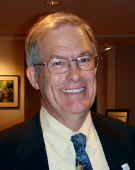
Dr. William Howland
Vermont
William Howland's lifetime spent working on environmental issues has led to lasting results in the Lake Champlain Basin, as well as across New England and our polar regions. In his positions as program director of the Lake Champlain Basin Program, professor at the University of Vermont and Middlebury College, and director of Audubon Vermont, Bill initiated programs and promoted environmental awareness. He effectively communicated with representatives from different jurisdictions and agencies on the importance of water quality, invasive species management, cultural heritage, and environmental conservation.
Throughout his nearly 20-year career with the Lake Champlain program, from which he recently retired, Bill furthered the vision of a clean lake, and advanced legislation supporting the lake. Before joining this program, as executive director of Audubon Vermont, he supported wildlife protection and land conservation initiatives. As director of the Northern Studies Program at Middlebury College, he promoted a better understanding of fragile arctic and subarctic regions. As part of the faculty of both Middlebury and the University of Vermont, he educated the next generation of environmentalists.
Lake Champlain would be different today if Bill had not been its advocate. His efforts to forge cooperative relationships set the stage for ongoing efforts to improve its health. Bill supported critical research and monitoring that is essential to long-term management decisions for the Basin. His program supported more than 800 grants to municipalities and local watershed organizations. These organizations continue to promote awareness of lake issues. Bill's legacy can be seen in enduring programs that protect water quality, help control invasive species, and promote cultural heritage programming. His legacy at Audubon was to create lasting protections for the fragile alpine ecosystems on top of the Green Mountains. Lastly, many of the students Bill taught now are in the field or themselves teaching, promoting stewardship for ecosystems and natural resources.
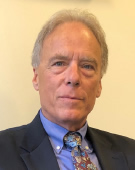
Arthur N. Marin
Massachusetts
Arthur Marin will retire this year after more than 25 years working for the Northeast States for Coordinated Air Use Management, an association of the state air agencies in New England, New Jersey, and New York. Arthur began there in 1991, and rose through the ranks to become executive director in 2005. In this job, he expanded on the organization's track record of cooperative state/federal relationships and provided leadership on virtually every major issue tackled by the states involving air quality and climate planning. Arthur was involved in initiatives that supported innovative policy and technical approaches in air quality and climate policy. A focus of his work has been transportation-related air pollution issues, first as a regional planner with the Massachusetts Department of Environmental Protection, then as a mobile source analyst, supervisor of the Transportation Team, deputy director and ultimately as director at NESCAUM. There he supported states' adoption of clean car programs. Through advanced technology programs adopted by the states, cars and trucks have become progressively cleaner and more efficient over the years.
His work includes fostering regional approaches to address fossil fuel power plant emissions, lowering sulfur content in home heating oil, pushing for cleaner burning gasoline and diesel in vehicles, and representing membership in forums. Through Arthur's efforts, the organization has solidified the region's stature as a role model for regional and national programs. Arthur is widely recognized as a strategic thinker with expertise and experience. His dedication and pragmatism contributed to numerous improvements in the region's air quality.
Individual
James Houle
University of New Hampshire Stormwater Center
Durham, New Hampshire
The work and accomplishments of James Houle, program manager of the University of New Hampshire Stormwater Center, help provide clean and safe water to the region and nation. Houle works on the cutting edge of stormwater management and watershed restoration. His innovative work has led to green infrastructure technologies and policies to reduce stormwater pollution at local, state and national levels. Most recently, James deserves recognition for his work in furthering municipal approaches to stormwater management. He is adept at bridging the gap between day-to-day department of public works functions and the academic world of stormwater. He ably takes “the message to the streets” so towns understand that efficient green infrastructure does not have to be complicated or expensive. A highlight of Houle's accomplishments is the hands-on technical assistance he provides to states, federal agencies and municipalities to address stormwater impacts and restore watershed functions. His pragmatic approach is unique for a researcher. His ability to listen and provide thoughtful responses to DPW concerns has earned him deep respect from municipal stormwater managers. For example, during the Berry Brook Restoration Project in Dover, NH, Houle worked with DPW staff on 22 site-specific stormwater solutions that met budget and staffing demands as well as pollutant load reduction and restoration goals. Always willing to collaborate on stormwater projects, Houle is first to recognize others' efforts. Now it's time to recognize him.
Margaret Shannon
Maine Lake Society
Belgrade Lakes, Maine
In 1999, Maggie Shannon moved to Maine to be near the lake where her family has vacationed for three generations. Thoughts of a relaxing retirement were dispelled as she took on roles as Belgrade Lake Association president, Invasive Plant Patroller, and founder of a 7-lake Courtesy Boat Inspection Program. In 2003, Maggie became executive director of the Maine Congress of Lake Associations, now Maine Lake Society, representing over 120 lake associations. She also is a board member of the Belgrade Regional Conservation Alliance and chairs its Lake Trust, while she continues as executive director, LakeSmart program director and lake policy director of the Maine Lake Society. The state LakeSmart Program reached about 30 lakes when it started to derail under budget constraints in 2011. Under Shannon's leadership, the Maine Lake Society took over the program in 2012 and since has spread to over 50 lakes. Shannon also has worked promoting legislation and policies to benefit Maine lakes. Recently, she worked with environmental organizations to promote a bond referendum that would provide $5 million dollars for tackling runoff pollution. Shannon advocated recently for a measure to require septic system inspections in shoreland zones when real estate is transferred, for funding for local Youth Conservation Corps, and for measures to improve camp roads in lake watersheds. Shannon connects with residents and legislators, and effectively communicates the values of and threats to Maine's lakes.
Wenley Ferguson
Save The Bay
Providence, Rhode Island
Since 1990, Wenley Ferguson, Save the Bay's restoration coordinator, has used her expertise, can-do spirit, and collaborative nature for her work protecting habitat, assessing water quality and generally restoring Narragansett Bay and its watershed. Her projects have included salt marsh, anadromous fish, and coastal buffer restoration projects and restoration monitoring. Recently, Wenley focused on assessing the impacts of rising sea levels on salt marshes. She documented regional impacts of sea level rise and, working with others, found techniques to improve marsh health as sea level rises. Ferguson also works to protect marsh migration corridors through easements and removing barriers to migration. She has put in place projects to regrade eroding banks and has removed infrastructure vulnerable to flooding and erosion to enhance coastal habitats and public access. Wenley also works with others to install rain gardens and complete other projects that filter stormwater. Recently, she installed stormwater filtration and infiltration structures on coastal roads that are susceptible to tidal flooding and erosion. She involves community volunteers in monitoring, planting and maintenance. An effective advocate for Narragansett Bay and its environment, Ferguson for 30 years has tackled challenges to its ecological health. She is skilled at mobilizing people to take action to protect and restore the bay. Ferguson has a legacy that will be powerful and lasting.
Terrence Gray
Rhode Island Department of Environmental Management
Providence, Rhode Island
Appointed in 2013 as the first associate director for environmental programs at the Rhode Island Department of Environmental Management, Terrence Gray has authority over programs covering the bulk of DEM's regulatory work and many other programs. Gray, who oversees 160 employees, began at DEM in 1987 as an engineer, served as chief of the Division of Site Remediation; chief of the Office of Waste Management; and assistant director for Air, Waste and Compliance. He was pivotal in many successful efforts to clean up hazardous waste, redevelop former industrial sites, close landfills, stop illegal dumping, and improve waste management and recycling. He now leads DEM work on emerging contaminants. Gray is the “go to” person for businesses and other applicants flummoxed by permitting processes. In 2018, Gray kicked off a New Employee Cross Training Program for DEM's newest employees with the goal of ensuring new employees understand work done in DEM's Environmental Protection and Natural Resources bureaus and can serve as ambassadors of all the Department's goals, no matter in which program they serve. Gray also has been instrumental in partnering with both the Rhode Island Society of Environmental Professionals and the Environmental Business Council of New England to enhance the relationship between DEM and both regulated communities and environmental professionals. Gray has been a leader for strategic planning and regulatory reforms. He has been the lead advocate for improving internal processes, making DEM the state leader on Lean. His work to identify waste ensures permitting processes are clear, predictable, and reliable. Gray is a “servant leader,” and a wonderful partner and colleague.
Dale Mitchell
Passamaquoddy Tribe – Sipayik
Perry, Maine
Dale Mitchell's membership in the Passamaquoddy Tribe - Sipayik describes not only his heritage, but his priorities, values and world view. In 2007, Mitchell established the Passamaquoddy Tribal Brownfields Program and immediately incorporated it into the fabric of the tribe's Environmental Department and its mission “to preserve, protect, restore, and enhance all tribal lands, water, air and human health and to develop means to monitor and enforce tribal environmental policies.” Since then, Mitchell has managed 13 Superfund grants and established a Brownfields program that has done site assessments, inspections, and cleanups and has become the tribe's primary resource for addressing a range of environmental issues. The program enforces environmental regulations and works for new environmental policies. It also has heightened tribal awareness of environmental concerns. Dale has met with Brownfields coordinators from tribes; presented at national conferences and tribal forums; participated in emergency responses; secured funding for a household hazardous waste day; and worked with businesses to improve their environmental footprints. Dale has been a tireless advocate for the tribe and is committed to protecting its natural resources. Mitchell embodies the tribe's Seventh Generation Principle mandating that every decision, be it personal, governmental or corporate, be considered with respect to its impact on descendants seven generations into the future.
Government
Town of Hardwick
Hardwick, Vermont
Aging infrastructure contributes to instability and hurts the environment. Water quality suffers when there is no investment in infrastructure. Hardwick's innovative approach to improving water quality at the same time has protected its infrastructure. In 2011, the town had significant issues with its water distribution. A fire led the state to work with Hardwick on a long-range improvement plan and to inventory its drinking water infrastructure. The town evaluated the condition of its system and ranked the risks to its infrastructure, which helped it set priorities for a capital improvements plan. The improvements cut water loss in half without raising rates. The town has set money aside for a rainy-day fund that can double as loan collateral. It has developed relationships with the state and other partners, leading to co-owned infrastructure for stormwater management. It also has collaborated with other towns and the state to get resources in a cost-efficient manner. Hardwick sets an example of a town using resources wisely to secure its infrastructure and improve water quality. Continuing to innovate, it is facing the need for new industrial parks and the town is planning ways to be sure it takes into account more stormwater and wastewater in long-term plans to reduce pollution.
Pleasant Bay Alliance
Harwich, Massachusetts
Nitrogen pollution in Cape Cod's water has led to algae, hurt estuaries and damaged fish and shellfish. A plan approved by EPA in 2015 to tackle this pollution included new strategies for addressing this looming crisis and was the first such plan to include watershed based permitting. This permitting empowered towns to work together and with the state Department of Environmental Protection as watersheds, rather than individual towns. It allowed towns to try innovative restoration approaches across boundaries. Before the 208 Plan Update, these towns acted individually, which often meant progress was stalled or efforts weren't as successful as hoped. The Pleasant Bay Alliance was formed by four towns - Orleans, Chatham, Harwich and Brewster - to coordinate the resource management plan for Pleasant Bay and its watershed. All four towns signed on to the 20-year Pleasant Bay Targeted Watershed Management Plan, designed to reduce nitrogen, find best practices for managing it, and install innovative treatments. This resulted in the first-of-its-kind watershed permit under DEP's pilot program. The four towns created a road map for other Cape communities as they work to reduce nitrogen pollution in shared watersheds. The success of restoring Cape Cod's waterways depends on trailblazers like the Pleasant Bay Alliance and its towns.
New Hampshire Department of Environmental Services
PFAS Coordination Team
Concord, New Hampshire
LeaAnne Atwell, Karlee Kenison, Amy Doherty, Jennifer Marts, Brandon Kernen, Sarah Pillsbury, Tracy Wood, Catherine Beahm, Ed Peduto, Andrew Fulton, James Martin, KateEmma Schlosser, Clark Freise, Derek Bennett, Rick Skarinka, Gary Milbury, Keith Dubois, Ray Gordon, Robert Scott, Michael Wimsatt, Fred McGarry
The PFAS Coordination Team at the New Hampshire Department of Environmental Services has been responsible for one of the largest environmental efforts in state history, involving a level of community outreach that exceeds any prior efforts by DES. In 2016, DES was notified by Saint-Gobain Performance Plastics that drinking water in its Merrimack facility was contaminated with low levels of PFOA, a chemical used and emitted into the air by the facility since the 1980s. DES began sampling wells at homes and businesses in the area and found wells within a 2-mile radius were possibly affected, including wells supplying the Merrimack Village District Water System. Bottled water was distributed and the state ordered that Saint-Gobain arrange for continuing a water supply. A smaller area was found then to be impacted by a former facility in Amherst, NH, operated by Textiles Coated International. A DES group, known as the PFAS Coordination Team, has met at least weekly to direct the agency response. Work has focused on making sure no one in New Hampshire is drinking water contaminated by PFAS. Its efforts, focused on the six towns impacted by the two plants, have extended to involve other facilities statewide. The team has worked to control air emissions from facilities, has supplied safe drinking water to more than 500 homes and has led to the cleanup of several sites.
Environmental, Community, Academia & Nonprofit
Food Rescue Initiative
Wellesley, Massachusetts
Ellen Korpi, Wellesley 3R Working Group
Sasah Purpa, Food for Free
The Food Rescue Initiative, a collaborative effort based in Wellesley, focuses on surplus food generated at schools, colleges and universities. The Family Meals Program takes donated wholesome, edible surplus food and passes it on to people in need. Vermont, New Hampshire, Massachusetts and Rhode Island all have regulations aimed at keeping organic waste, including food waste, out of landfills. In September 2017, schools and colleges in the Metrowest area committed to this Food Rescue Initiative that involves donating about 20,000 meals annually to the Food for Free Family Meals Program, which feeds people in need. So far, the schools involved are Wellesley Public Schools, Babson College, Bentley University, Olin College of Engineering and Wellesley College, as well as their food service providers. With a critical mass now involved, making the program cost effective, other local institutions with leftover food are being recruited. The program was put together by the 3R working Group in Wellesley. As the group was recruiting colleges, MassBay Community College revealed that half its students surveyed said they lack reliable access to nutritious food. Food for Free worked with MassBay so its students could receive food from the program. Food insecurity in New England ranges from 9 to 13.8 percent of the population. Other communities with a willing collaborative team can replicate this program. EPA New England is now working in Rhode Island on a similar collaboration.
Pawcatuck River Restoration Project
Hope Valley, Rhode Island
Wood Pawcatuck Watershed Association
The Nature Conservancy – Rhode Island Chapter
The efforts of the Wood Pawcatuck Watershed Association and The Nature Conservancy, Rhode Island Chapter, restored a passage for fish, improved the flow of water and the water quality, and reduced flood risks. Five dam removals and river restoration projects in the last decade have left the headwaters of the Pawcatuck River open to spawning of migratory fish for the first time since colonial development of mills and dams there. This was made possible by more than $10 million of government funding, the leadership of the Wood Pawcatuck Watershed Association and The Nature Conservancy and the efforts of landowners and citizens. Among the projects, the Lower Shannock Falls Dam was removed and a natural river channel and a riverside park were created. Another project involved removal of Kenyon Mill Dam and construction of a pool and rock ramp next to a textile mill. Beyond the new spawning grounds and improved passage provided to migratory fish, these projects have reduced flood risks. They also have provided safe boating passage and improved the river for fishing. These restoration projects reflect the desire of the association and watershed communities in Rhode Island and Connecticut for the Wood-Pawcatuck rivers system to be designated as a Wild & Scenic River under the U.S. Department of Interior National Park Service. This effort is approaching the final stages to achieve designation.
The Nature Conservancy New Hampshire Chapter
Concord, New Hampshire
The Nature Conservancy brings people and groups together to help protect the environment. It promotes clean energy and works with communities to develop neighborhood visions of environmental solutions best for residents. The Conservancy works to connect the region's river and stream networks by identifying and helping to replace culverts, and removing dams and other infrastructure that impair water flow and restrict aquatic species movement. The New Hampshire Chapter of The Nature Conservancy and its partners recently completed a new tool to evaluate the condition of tidal crossings around seacoast New Hampshire. While some tidal crossings allow tides to move in and out, others are undersized, obstructed or falling apart. The protocol will standardize how these crossings are assessed and help set priorities for improvements. The Nature Conservancy scientists also are working to restore natural habitats such as salt marsh, oyster reefs and floodplain forests as natural infrastructure solutions to make our communities more resilient, as well as working to reduce nitrogen pollution into waterways through effective partnerships and innovative strategies.
University of New Hampshire Center for Freshwater Biology
Durham, New Hampshire
Jim Haney, Alan Baker, Jeffrey Schloss, Robert Craycraft, Shane Bradt, Amanda Murby McQuaid, Anne Ewert, Katharine Langely, Nancy Leland, Jonathon Dufresne, Sabina Perkins, Sonya Carlson
The University of New Hampshire Center for Freshwater Biology has worked with EPA New England and other entities across the region to address cyanobacteria issues. The UNH Center has been instrumental in ongoing research, and developing tools for understanding the global proliferation of harmful cyanobacteria blooms and educating the public on its impacts. The UNH Center worked with state and local entities to develop a scientific approach to monitoring and tracking cyanobacteria blooms. Their research, as well as their educational and monitoring efforts, resulted in participation from 28 of the 50 state environmental agencies and often participation across state and national boundaries. The program has educated hundreds of people and local associations nationwide, building public participation in monitoring. All six New England environmental agencies have participated, and municipal water suppliers have incorporated the program's techniques into standard practices. The UNH Center has pioneered innovative approaches to monitoring cyanobacteria and engaging the public. They have been at the forefront with cutting edge research on cyanotoxins. In addition, they have developed many tools now used by EPA and states for tracking bloom formation and cyanobacteria development in freshwater. Not only has the team helped advance the science behind cyanobacteria blooms and toxin occurrence, but they have dedicated time and energy to working collaboratively for improvements in clean water.
Business
Onion River Cooperative
Burlington, Vermont
John Tashiro, Pat Burns
Onion River Cooperative opened the City Market South End in 2017, transforming a former Brownfields site into an environmentally-friendly supermarket. The project was led by John Tashiro, general manager, and J Patrick Burns, expansion project manager. This member-owned cooperative is dedicated to supporting the local economy and strengthening the local food system. The Co-op opened City Market community food store in downtown Burlington 15 years ago. In 2015, Co-op leaders found a 4.5-acre vacant industrial property in South End. Its asbestos, lead, petroleum, and volatile organic compounds needed to be cleaned before the property could be used for a second market. With support from the Chittenden County Regional Planning Commission and state Brownfields programs, the $13 million, 23,000-square-foot facility was opened in November with a teaching kitchen, community space, and Co-op offices. Besides providing healthy food and cleaning a contaminated property, City Market South End is pedestrian-friendly, and has a covered bicycle parking area. The refrigeration system uses a fraction of the energy typical in grocery stores, and solar tubes, LED lighting, and high-efficiency blowers and fans also minimize electricity usage. Surplus food is transported to Chittenden Emergency Food Shelf. The Co-op, which employs more than 100 people, proves environmental protection, economic development, and healthy communities can go hand in hand.
Diageo North America
Norwalk, Connecticut
Diageo North America is committed to reducing the company's environmental impact, particularly its impact on air quality. Diageo's North American Supply organization has been working to improve air quality by significantly reducing carbon emissions related to its logistics. In 2015, Diageo joined EPA's SmartWay program to reduce emissions by shipping products with SmartWay-certified carriers. When Diageo chooses carriers each year, a key factor is whether the carrier is SmartWay-certified. If a carrier is not registered with EPA, Diageo recommends certification and supports them through the process. After partnering with SmartWay, Diageo increased its ton-miles shipped via SmartWay-certified carriers from 73 to 83 percent by 2016. By February 2018 it had achieved 95 percent of ton-miles shipped with certified carriers. As of April 2018, Diageo has decreased its carbon emissions 62 percent since 2015. Efforts focused on supply site operations in 2017 reduced greenhouse gas emissions by 74 percent from 2007 - exceeding initial targets. Diageo North America embraces innovative ideas and approaches by, for example, converting its old diesel tractors into electric vehicles that release zero carbon emissions. Two electric yard jockeys eliminate 60 U.S. tons of carbon dioxide annually. The company's goal is to expand this project to other areas as it looks to continue reducing its environmental footprint.
Mark Richey Woodworking, Inc.
Newburyport, Massachusetts
This award recognizes the efforts of Mark Richey Woodworking to reduce toxic waste and save energy. This company, which makes architectural millwork products, also is known for its energy efficient manufacturing and other innovative energy initiatives, like the rooftop solar array and biomass boiler. The company has extensive experience on LEED-certified projects and helps clients navigate green building requirements. It has worked to reduce its own use of toxic chemicals and waste, and to improve worker safety. The company bought a solvent recycling unit, an ultrasonic spray gun cleaner, and a robotic spray line, and prioritized its use of water-based coatings to minimize use of solvents and volatile organic compounds. The company saw a 73 percent reduction in waste generation despite significant growth in manufacturing space, hiring, and production. As a result of its efforts, the company has cut in half its purchases of denatured alcohol to about 1,200 gallons per year. In the past, solvent was shipped as hazardous waste, but the company installed an enclosed robotic spray line that sprays a consistent coat and can be programmed to spray only the area required. Increased efficiency means the $1.2 million will be paid back within five years.
Encore Boston Harbor
Everett, Massachusetts
Encore Boston Harbor, a resort and casino in Everett, completed a $68 million cleanup and restoration at the former Monsanto chemical factory site. The work involved cleaning soil, dredging contaminated sediment and creating a living shoreline along the Mystic River. When the casino licensing process began, the Mystic River Watershed Association asked applicants what they would do for the local environment. It asked Encore Boston Harbor if it would replace the planned sheet piling with a living shoreline. The company promised to take care of all soil contamination on site, revegetate the shoreline and completely clean the sediment. They have since removed some 840,000 tons of contaminated soil and 41,000 tons of sediment, brought in 30,000 clean tons of sand for capping contaminated sediments and created a 24,000-square-foot living shoreline. Encore also is installing a co-generation facility, rainwater harvesting, a green roof and solar panels. The Mystic River Watershed Association, which nominated Encore, has used this living shoreline as a model for other riverfront landowners. The organization is collaborating with the Massachusetts Department of Conservation and Recreation to build a living shoreline across the river in Somerville. The City of Everett endorsed this nomination, recognizing that this clean-up created a transformative spirit throughout the city. Encore is revitalizing an industrial, underutilized neighborhood, and opening a waterfront that had been fenced off for over a century. This project will have an impact on the region for generations to come.
Volvo Ocean Race Newport Stopover Team
Newport, Rhode Island
Jeremy Pochman, Robin Clegg, Brad Read, Dave McLaughlin
The Volvo Ocean Race, which covers 45,000 nautical miles over four oceans, stopped for 12 days in May at Fort Adams State Park in Newport, Rhode Island. Sail Newport, a local non-profit and official host in Newport, as well as Volvo Ocean Race, 11th Hour Racing, Clean Ocean Access, and Mega Disposal were nominated as a group for their combined focus on ocean health. The theme of this year’s sustainability program was “Turn the Tide on Plastics.” Two boats for the first time during this race collected data on water quality and plastic concentrations in some of the remotest parts of our planet. The Newport stopover featured the fourth annual Ocean Summit, which was so popular, more such summits are planned during the race this year to showcase innovative solutions to the plastic crisis. The non-profit, 11th Hour Racing, which works with the sailing community and maritime industries to protect and restore ocean health, put together the summit, which drew 100,000 visitors. Host communities and businesses were urged to sign a pledge to work to reduce pollution, and Rhode Island was the first state to take the pledge. Clean Ocean Access, a Newport-based non-profit, led the Sustainability Committee, which put in place systems to eliminate single-use plastics, minimize the event footprint and divert thousands of pounds of waste from landfills. Hundreds of volunteers were involved. The Rhode Island Department of Environmental Management nominated this team for its efforts to address ocean plastics and to run a green event.
Children's Environmental Health
Mayor Charles Lombardi
North Providence, Rhode Island
Water utilities have reduced lead exposure by installing corrosion control treatments. In recent years, public health and regulatory agencies have focused on replacing lead service lines to reduce lead exposure in drinking water which, in children, can result in neurological and developmental damage. This means addressing complex issues that require the involvement of the community and significant cost. Most lead service lines are owned partially by the water utility and partially by property owners. North Providence, with mostly moderate to low income families, has more than 500 lead service lines. Under the leadership of Mayor Charles Lombardi, the city has leveraged federal HUD funding through the state Office of Housing and Community Development. These funds, which municipalities typically invest in low income neighborhoods, in North Providence were used creatively to get $270,000 to replace privately owned lead service lines. The city will replace the publicly-owned lead service line for every private line replaced. North Providence knocked on doors to get residents to participate. This led to replacing about 40 lead service lines. Then the city held public forums and now plans to replace about 100 lines in 2018. Under the vision of Mayor Lombardi, a creative solution was found and important public health changes were made. Challenged by daunting numbers of lead pipes, North Providence is an inspiration to other communities wanting to eliminate lead pipes and protect their children.
City of Claremont
Mayor Charlene Lovett, Ryan McNutt, Steve Coombs, Sean Glasscock, Victor St. Pierre
Valley Regional Healthcare
Peter Wright, Angela Biron
Southwestern Community Services
Keith Thibault, Rick Geffken
Claremont School District
Brian Rapp
SAU 6
Dr. Middleton McGoodwin
Claremont, New Hampshire
It is no coincidence that in February Governor Chris Sununu chose Claremont as the location to sign into law new protections against childhood lead exposure, with Mayor Charlene Lovett by his side. The new legislation mandates lead screenings for all 1- and 2-year-olds in the state and lowers the blood-lead level that triggers state intervention. For decades, Claremont has been one of New Hampshire's highest risk communities for lead poisoning, with an average of 40 children poisoned yearly. Meanwhile, testing rates for blood lead levels in 1- and 2-year-olds there have been among the lowest in the state, even though state health officials recommend universal lead screening for kids due to old housing stock. Lead paint in homes is the single largest contributor to elevated blood lead levels in New Hampshire. Fortunately, the City of Claremont has a champion in Mayor Charlene Lovett. Faced with this alarming data, Mayor Lovett made lead poisoning prevention and awareness a priority. She spearheaded a collaborative effort involving healthcare professionals, the school superintendent, and local building, code, and health officials, to increase public awareness and testing rates, and reduce lead hazards in housing. This year for the first time the Claremont school district is requiring lead screening for all students entering kindergarten and pre-kindergarten, the first policy of its kind in the state. The ultimate goal is to prevent poisonings from happening in the first place. Because protecting a child's health is so critically important, we celebrate strong voices like those from Mayor Lovett and her partners in Claremont.
Massachusetts Lead in Drinking Water Team
Massachusetts Department of Environmental Protection
Therese Beaudoin, Beth Card, Jenifer Carter, Eric Cheung, Ed Coletta, Isabel Collins, Stephanie Cooper, Yvette DePeiza, Gary Dulmaine, Andrew Durham, Doug Fine, Amy Finch, Margaret Finn, Carlos Fragata, Millie Garcia-Serrano, George Gardner, Damon Guterman, Brian Harrington, Pat Hurley, Thomas Keefe, Barbara Kickham, Cathy Kiley, Susannah King, Kristin LaCroix, Marc LaPlante, Paul Locke, Joshua Lowman, Stephen Mahoney, Jo-Ann Manijak, Mike Maynard, Anna Mayor, Steve McCurdy, Dahlia Medeiros, Jeff Mickelson, Gary Moran, Andrew Osei, Ken Pelletier, Purna Rao, Catherine Sarafinas, Meghan Selby, Jessica Sibirski, Marie Tennant, Melika Uter, Margaret Webber, Becky Weidman, Tio Yano
Massachusetts Water Resources Authority
Dave Coppes, Joshua Das, Steve Estes-Smargiassi, Mike Hornbrook, Fred Laskey, Steve Rhode, MWRA Lab Staff
University of Massachusetts, Amherst
Marie-Françoise Hatte, Theresa Girardi, Bob Hoyt, Richard Larson, David Reckhow, John Tobiason
Massachusetts Clean Water Trust
Deborah Goldberg, Nate Keenan, Sue Perez
Department of Elementary and Secondary Education
Christine Lynch
Department of Early Education and Care
Donna Cohen Avery
Department of Public Health
Meg Blanchet, Jessica Burkhamer, Michael Celona, Julie Cosio, Jana Ferguson, Alicia Fraser, Terry Howard, Robert Knorr, Marc Nascarella, Lorraine Simbliaris, Jan Sullivan, Patricia Walker, Rachel Wilson
To make sure children in Massachusetts schools have safe drinking water, Governor Charlie Baker in 2016 asked the state Department of Environmental Protection to raise awareness about the importance of testing for lead and copper in drinking water in public schools. This lead to the formation of the Massachusetts Lead in Drinking Water Team, including representatives from Massachusetts Department of Environmental Protection, the University of Massachusetts, the Massachusetts Water Resources Authority and other partners. The team solicited public schools to sign up for help. The program included education to help schools establish sampling programs and to address elevated lead and cooper levels. DEP contracted with the state to provide technical assistance and oversee contracted laboratory analysis, provided by the Massachusetts Water Resources Authority, to determine if water exceeded recommended levels for lead or copper. Results were reported to the schools, along with resources to address problem fixtures. More than 150 communities received technical assistance and more than 800 school buildings had plans mapping out all fixtures to be tested. In addition, nearly 56,000 water samples were collected from about 32,000 faucets, fountains and other fixtures in schools. The program was supported with $2.75 million from Mass Clean Water Trust. As a result of good budgeting, sampling help is being offered to more schools in the coming year and some 200 schools are expected to be tested. Besides spreading the word about lead and copper in school drinking water, this voluntary program taught school officials how to sample so the work can continue.
Special Thanks
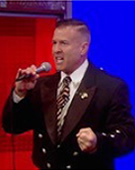 Vocalist
Vocalist
Daniel M. Clark
“The Singing Trooper” and Veteran of the US Marine Corps
He has performed with the Boston Pops during the 4th of July, was featured in People Magazine, a guest artist on Fox and Friends, The Donny and Marie show, and the Rosie O'Donnell Show. He performed for President George W. and Barbara Bush. In 2013, Clark sang God Bless America at the first game of the World Series for the Boston Red Sox. He has also delivered a spectacular National Anthem for the New England Patriots, Bruins, Celtics, and has opened the last 28 Boston Marathons! He was seen performing for the opening of the Tall Ships for Sail Boston 2017. Most recently his televised recording of the National Anthem is at the National September 11th Museum in New York city. Sgt Clark continues to perform in concert around the nation.

Accompaniment
Ray Cavicchio and his amazing invention, the Cavichord
Ray's musical career started in Hollywood at age 16 as a marimba artist on the Lawrence Welk Show. Although the producers wanted Ray and his brother, Rob, to stay on with the Welk show, the offer was politely declined due to their college aspirations. Ray has a Ph.D. from Tufts in Psychology-Medical Engineering, and is a patent holder. He is a photographer, computer-graphic artist, and an instrument-rated private pilot.
Ray had classical piano lessons from age 8 to 12, followed by some marimba lessons from his dad, Salvy, a virtuoso featured on several popular radio and TV shows in the 1940s and 1950s. Salvy's brother, Dan, gave Ray an accordion when Ray was in college. Ray soon rigged the accordion with an electronic bass device using circuitry copied from an organ pedal-board. Unfortunately, a few years later this unique accordion was stolen along with the special bass device. However upsetting it seemed at the time, technology had evolved, and Ray patented an innovative circuit, incorporating several improvements, thus paving the way for his ultimate keyboard instrument, the Cavichord.
Cavichord
A standard accordion has bass and chord buttons on the left side, and a piano-style keyboard on the right. The Cavichord makes good use of this intrinsic triple-section design while adding a fourth section of melody derived from the highest note played with the right hand. Each of these four sections can play a unique combination of sounds simultaneously depending on how the Cavichord is squeezed. With practice it can sound and feel as though there were a symphony orchestra under one's fingertips with each section responding independently yet harmoniously. Therefore, all of the music is fundamentally live at all times.
You will hear the exhilarating sound of a harp glissando. No other keyboard in the world has this feature. These arpeggios were recorded live as Ray played them. He invented special circuitry that allows reproduction of these arpeggios at will using the chord buttons of the Cavichord.

Rivanna Natural Designs, Inc.
Green awards for your next green event
At Rivanna Natural Designs, we believe products that express gratitude, reward performance, and celebrate excellence should harm neither the planet nor the people who create, purchase, or receive them. We are honored to create these awards for the EPA's New England Region. The glass for the awards comes from a 100-year-old family-owned artisan glass company in West Virginia that transforms crushed bottle glass. The ebony glass awards are smooth, rich, and sandblast flawlessly. It's difficult to believe they are made from glass dust that would otherwise be considered hazardous waste.
The central principal of our business is that, in its every aspect, our work must reflect our strong obligation to our clients, coworkers, community, and environment. A certified woman-owned business and B Corporation, we participate in a number of voluntary programs aimed at minimizing our environmental footprint, including EPA's Green Power Partnership and EnergySTAR™ for Small Business.

